Zac Clark was a freshman at the University of San Francisco when the COVID-19 pandemic hit. He moved out of his dorm and into the Tenderloin, a low-income neighborhood in the Bay Area.
From his apartment window, he first began observing people living in homeless encampments, and later, talking to them.
“I began starting conversations with the very people who lived outside of my building,” he told New Atlas.
He had plans to launch some sort of transitional housing program, but when he heard the lived experiences of the unhoused people in his community, a different seed was planted.
That’s when the Makeshift Traveler backpack was born.
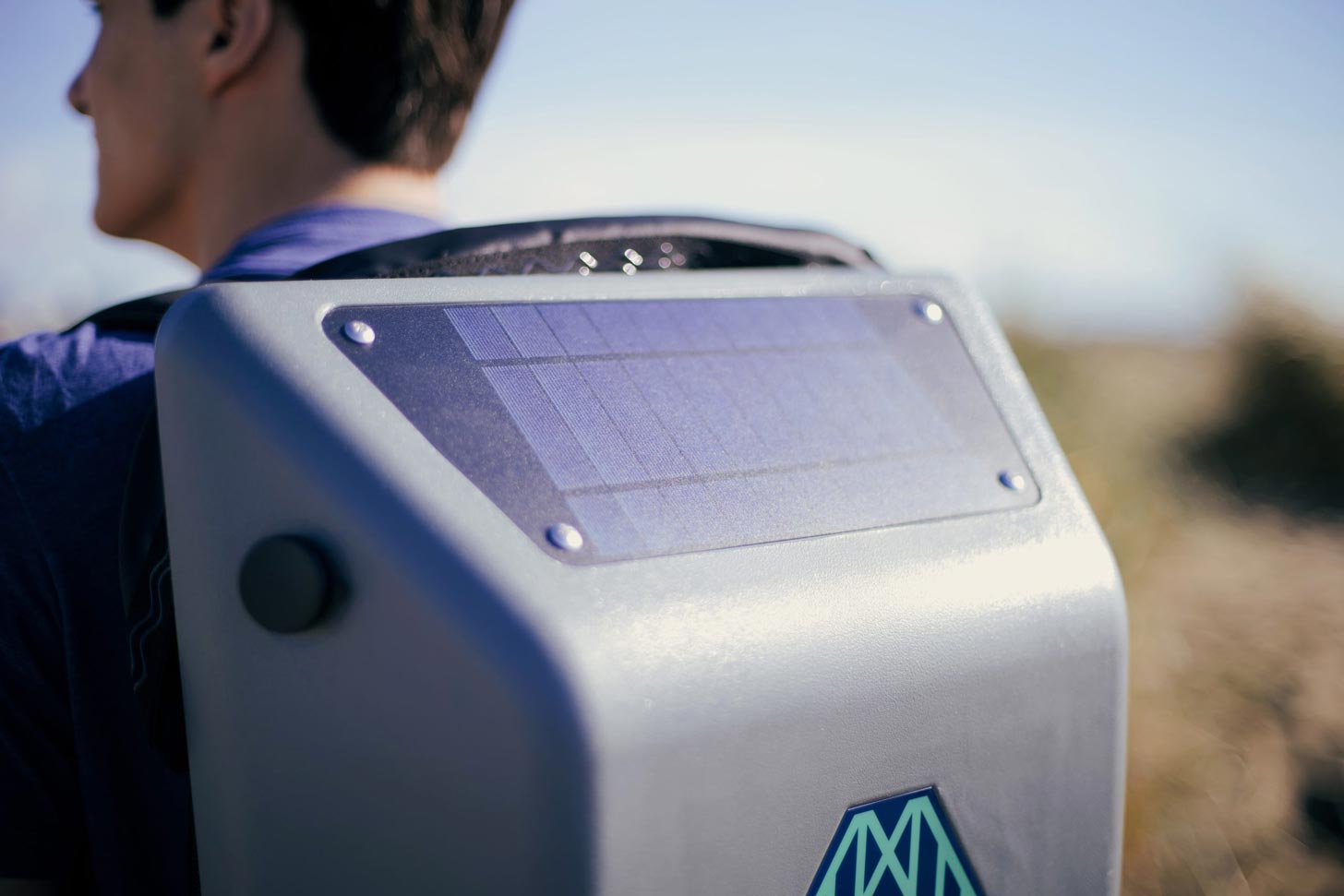
“I … started the Makeshift Traveler program based on feedback I had received from people I spoke with who kept saying they had phones but couldn't charge them, and their belongings were constantly being stolen or damaged,” Clark told New Atlas.
The Makeshift Traveler is a hard-shell backpack made of recycled water bottles with a 4-watt solar panel installed on top. This connects to an internal 10,000-mAh rechargeable power bank inside of the backpack.
A full charge requires about four to six hours of direct sunlight, or one to two days in a typical outdoor setting. Then, there’s enough power for two to three smartphone battery charges.
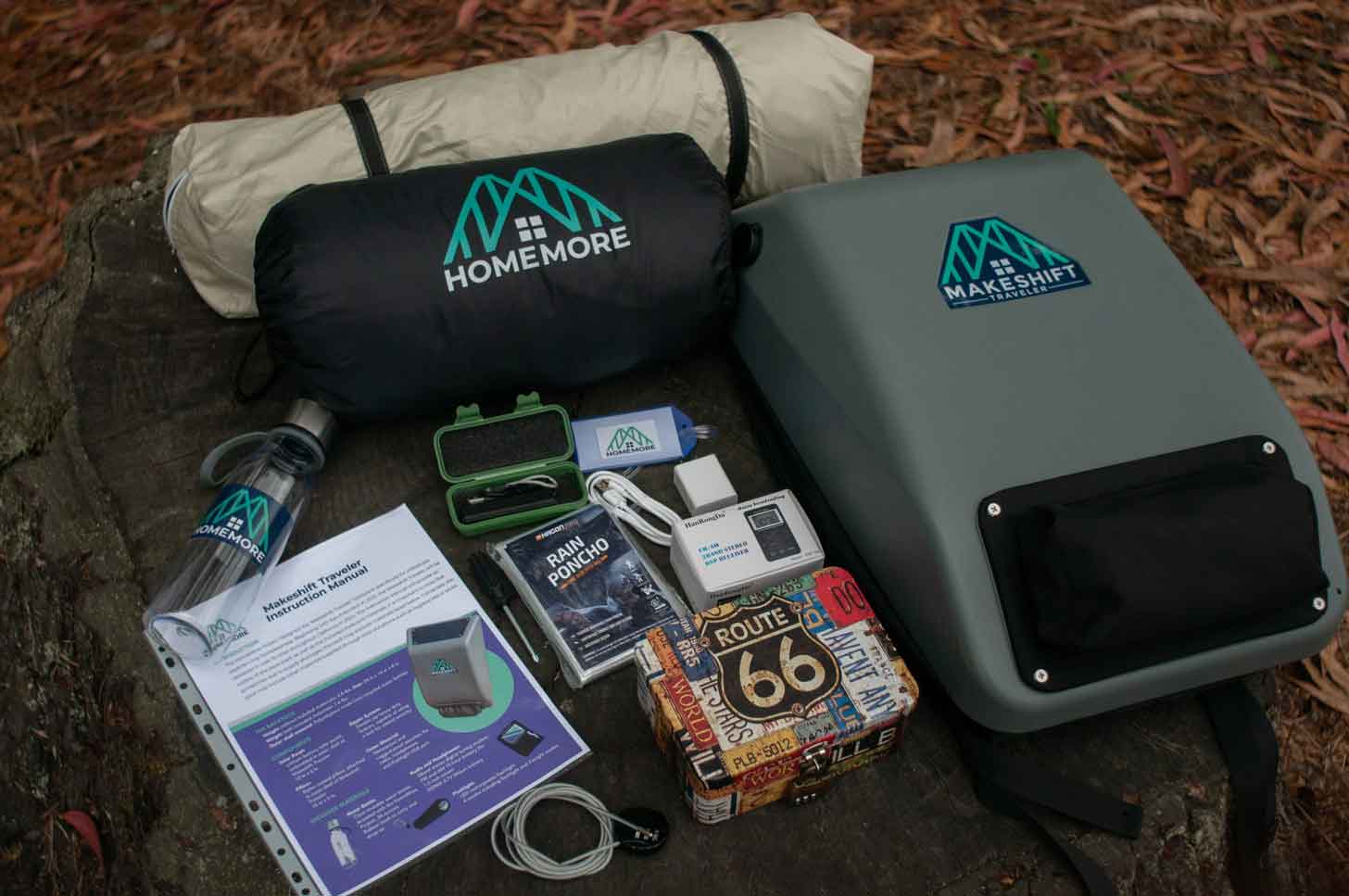
But it doesn’t just act as a source of power. The backpack also includes a nylon pillow that can be puffed out by stuffing a T-shirt inside.
A tent, sleeping bag, rain poncho, radio, flashlight, hygiene kit, socks, and water bottle are also packed inside. A lockbox and ID card are included, along with a brochure with information about 15 local services supporting unhoused community members.
“The Makeshift Traveler was designed to be the last backpack someone experiencing unsheltered homelessness will ever need,” Clark told New Atlas.
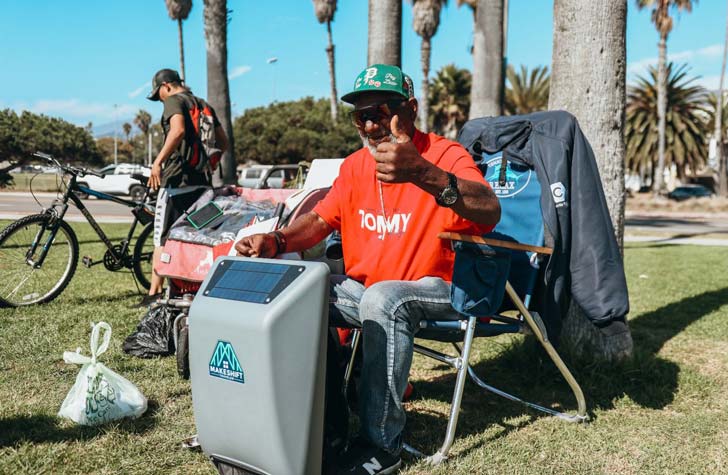
Since Clark first launched the backpack in October 2022, more than 1,200 have been distributed at no cost to people experiencing homelessness in 25 cities throughout California. His nonprofit, The HomeMore Project, is able to give the backpacks away for free thanks to generous partners and donors.
The HomeMore Project, also has plans to give away 2,000 more with partners in other states.

“As we continue delivering Makeshift Travelers throughout California, we remain grateful to every funder, faith-based group, outreach worker, and service provider who makes this work possible,” Clark wrote in a blog post for The HomeMore Project.
“Together, we’re not only handing out backpacks, we’re building relationships, restoring dignity, and showing up for people who are too often overlooked.”
The backpack is currently in its third iteration, but a fourth is launching soon, which Clark said will be improved with new features requested by homeless clients over the years.
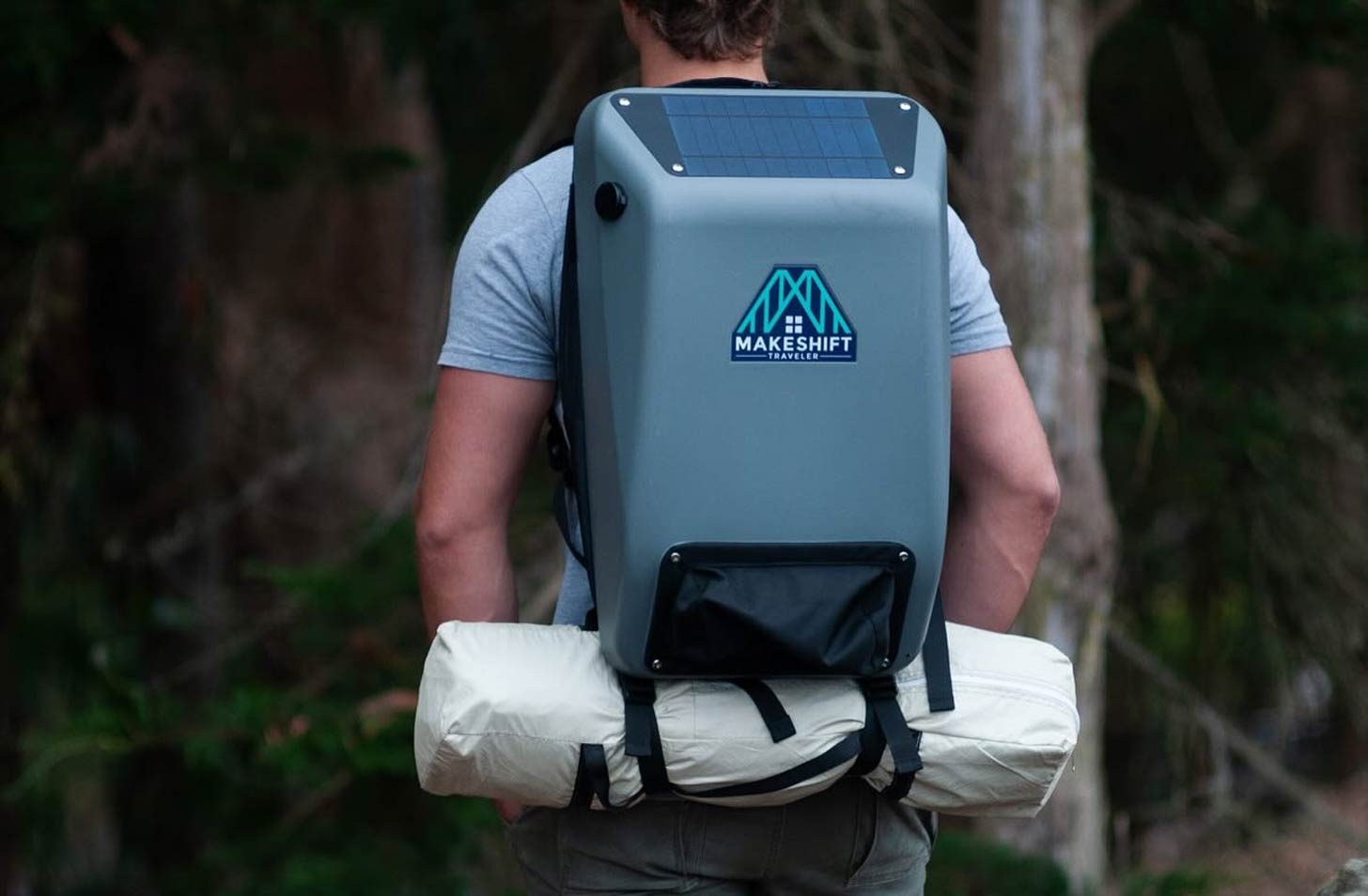
“I didn’t know this was happening,” Steve Colunga, a man who sleeps in a park, told the San Bernardino Sun. He reportedly had a drawstring backpack in need of replacing and was excited about the sleeping bag and other materials in the Makeshift Traveler.
“This is a really cool resource,” he added.
People in need of a backpack can apply for one online. And for those looking to support the project, donations are accepted online — both to fund more backpacks and a future transitional housing program under Clark’s nonprofit.
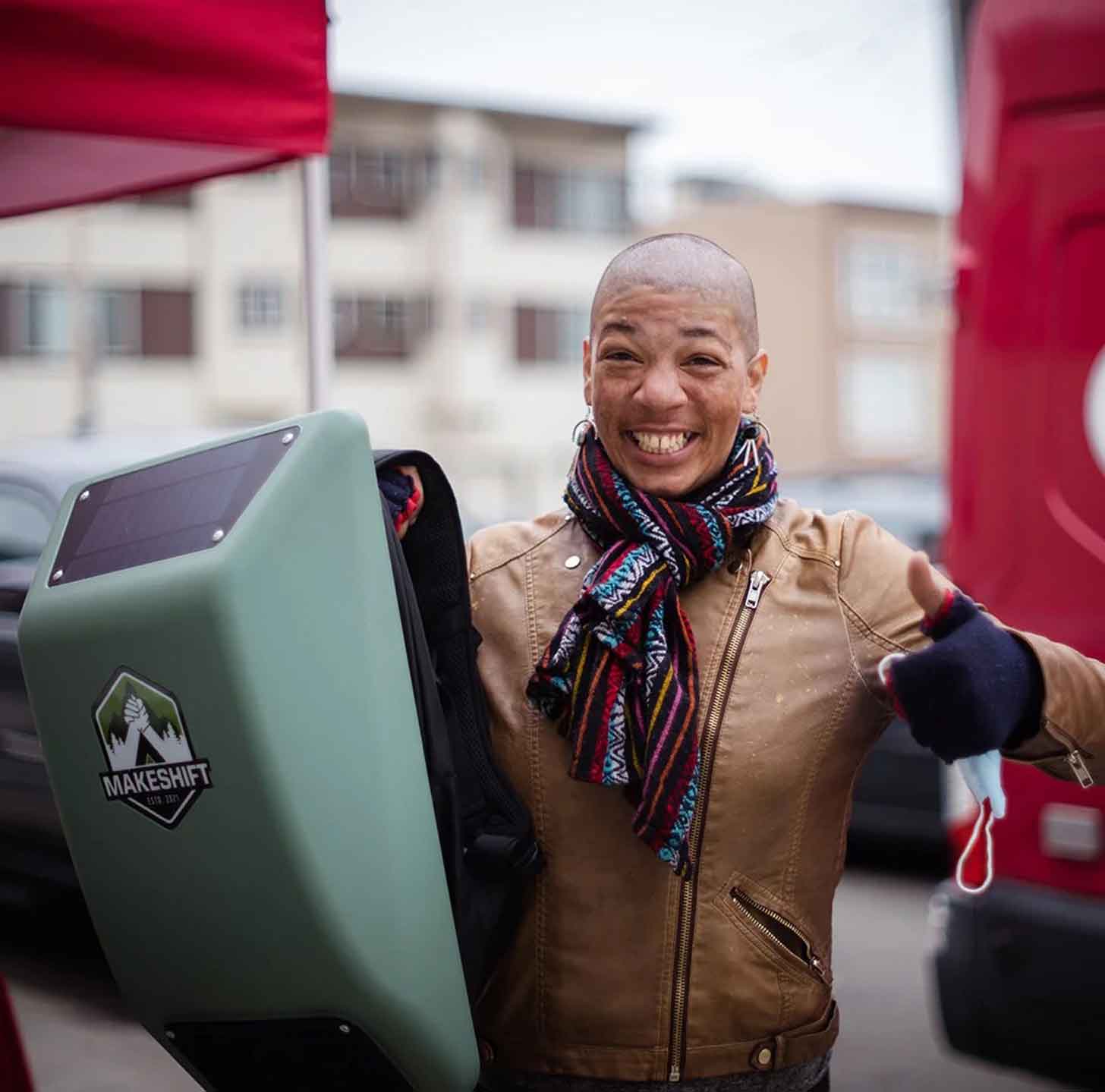
“To me, there’s nothing more important than ending homelessness … it doesn’t take a lot for someone to get their basic needs,” Clark told the Sun.
“These are to provide these needs — and a way for us to meet and build trust with people, to have them open up and share their stories. Because they are people, not problems to solve.”
You may also like: 12-year-old named 'girl of the year' for designing solar-powered sleeping bags for her homeless neighbors
Header image courtesy of The HomeMore Project



